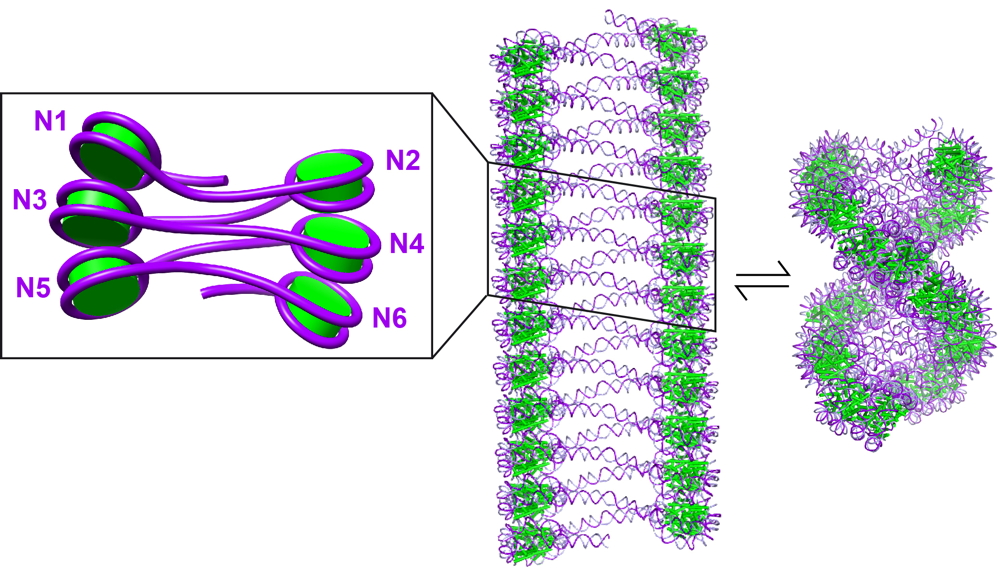Our genetic information is encoded by DNA, which is packaged in the cell nucleus in the form of chromatin. The basic building block of chromatin is the nucleosome, formed by the wrapping of DNA around a core of basic proteins called histones. Nucleosomes pack together to form a nucleosomal array, whose structure is highly dynamic and whose conformation plays a key role in gene expression. Notably, the formation of a compact 30-nm fiber is associated with the inactivation of gene expression. However, how chromatin undergoes a change in conformation remains poorly understood.
In collaboration with researchers from Grenoble, Lyon and Strasbourg, IBS researchers investigated the structure of a 6-nucleosome array using a combination of structural, biophysical and biochemical approaches. The 6-nucleosome array forms a surprisingly flat structure, whose nucleosome density is only half that of the 30 nm chromatin fiber. Moreover, a minor change in ionic conditions induces the array to adopt a more compact, twisted conformation that corresponds to that of the 30 nm fiber. These results reveal how a minor change in local environment, generated for example by the post-translational modification of histones, can induce a radical change in chromatin conformation, providing insights into the structural plasticity of chromatin that is central to the regulation of gene expression.
